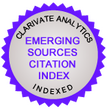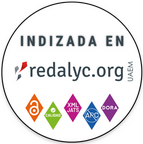Mineração de Dados Educacionais para a Predição de Evasão
Experiência em uma Universidade do Sul do Brasil
DOI:
https://doi.org/10.13058/raep.2024.v25n1.2415Abstract
Dropout is a problem that plagues public and private higher education institutions around the world and strategies for analyzing the reasons for the phenomenon abound in scientific publications. Many works that aim to find the most appropriate and effective techniques and practices for identifying dropout inducers in students end up being based on the use of technologies to improve data analysis and achieve a greater volume of processed information. The present study aims to identify good practices for the use of data mining for educational information. For this purpose, existing practices in the literature were investigated for structuring research with data from a public university in the interior of the state of Rio Grande do Sul. The study includes practical tests with the Decision Tree algorithms C4.5, Random Forest and Neural Networks in different datasets. The work demonstrates that the Random Forest algorithm was able to be more accurate in identifying students at risk of dropping out. From this experience other institutions will be able to base themselves for the definition of their best practices.
Downloads
Published
How to Cite
Issue
Section
License
Copyright (c) 2024 Piero Salaberri, Sandra Piovesan, Valesca Irala

This work is licensed under a Creative Commons Attribution 4.0 International License.
By publishing a manuscript in the journal Administração: Ensino e Pesquisa (RAEP), the authors declare that the work is of their exclusive authorship and therefore assume full responsibility for its content. The authors grant RAEP a non-exclusive rights license to use the work in the following ways:
(1) Sell and / or distribute the work in hard copies or electronic format.
(2) Distribute parts of the work as a whole to promote the journal through the internet and other digital and printed media.
(3) Record and reproduce the work in any format, including digital media.
Authors and readers are permitted to share the material, use it in classes, for presentations and also for other purposes, and to create new knowledge based on any RAEP publication, as long as the due credit is attributed to the original work and the respective author(s), through citations, references, and other means.
The journal adopts preventive measures to identify plagiarism using software designed for this purpose.
RAEP does not charge authors for the article submission nor for the publishing of approved articles.
In line with the journal's policies, each published article will be given a Creative Commons CC-BY 4.0 license.










